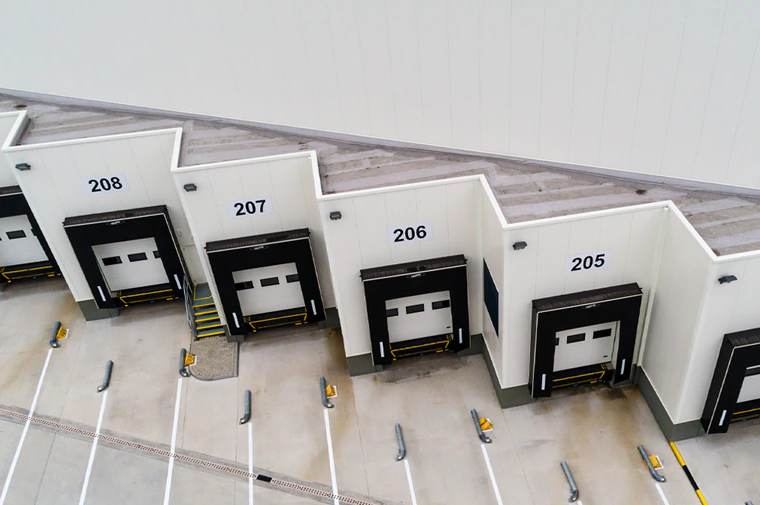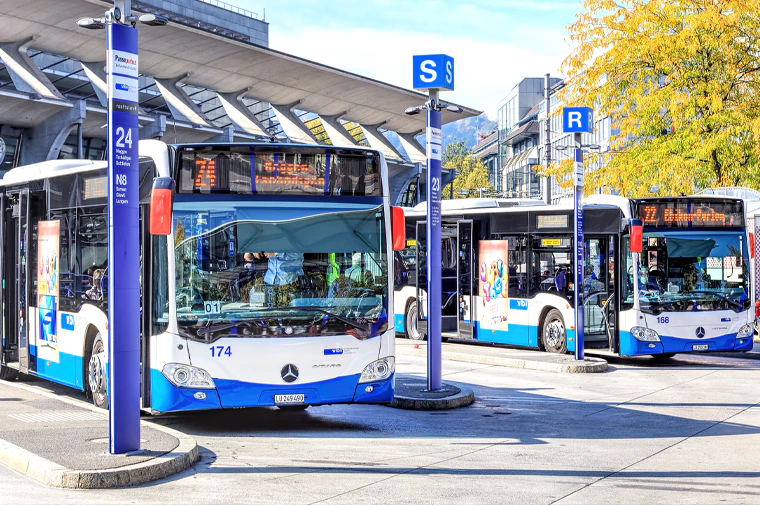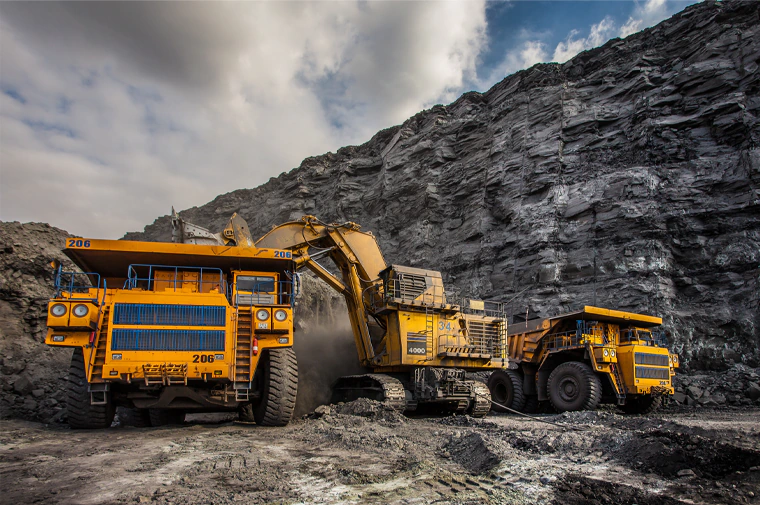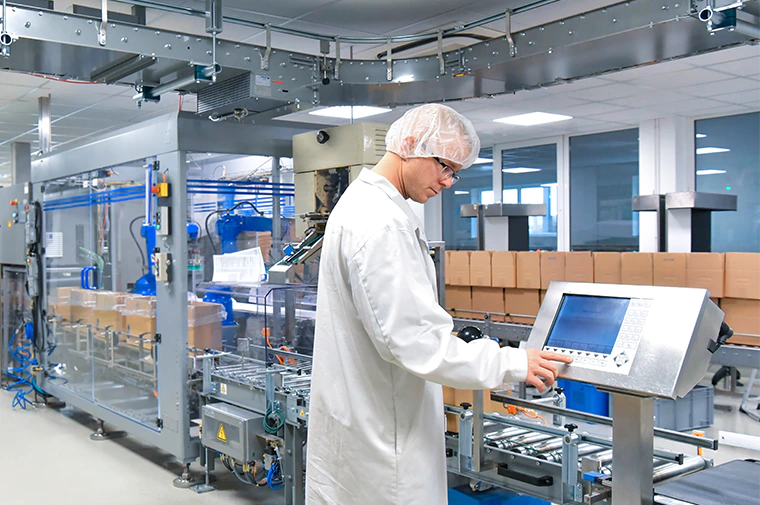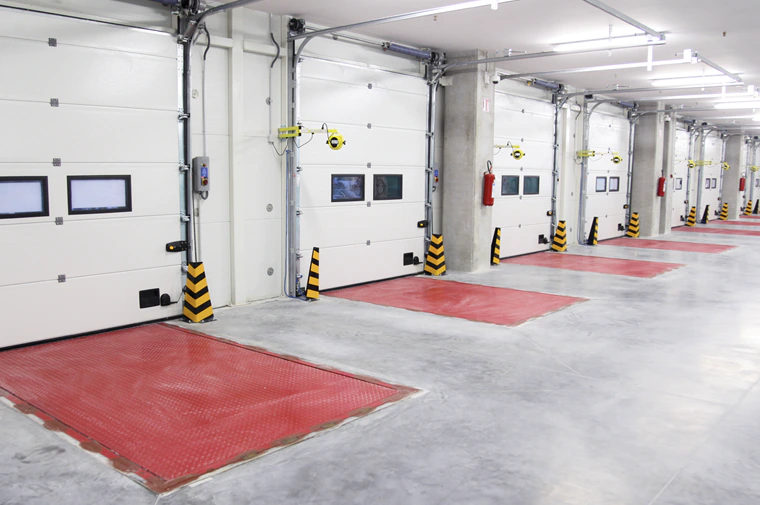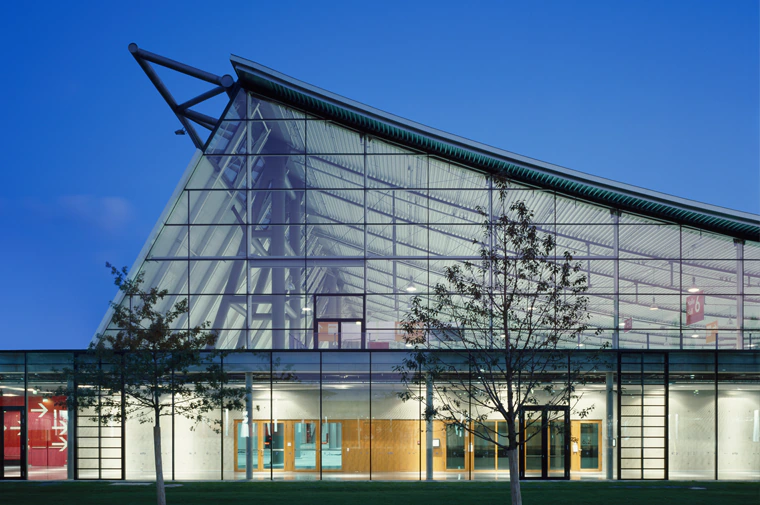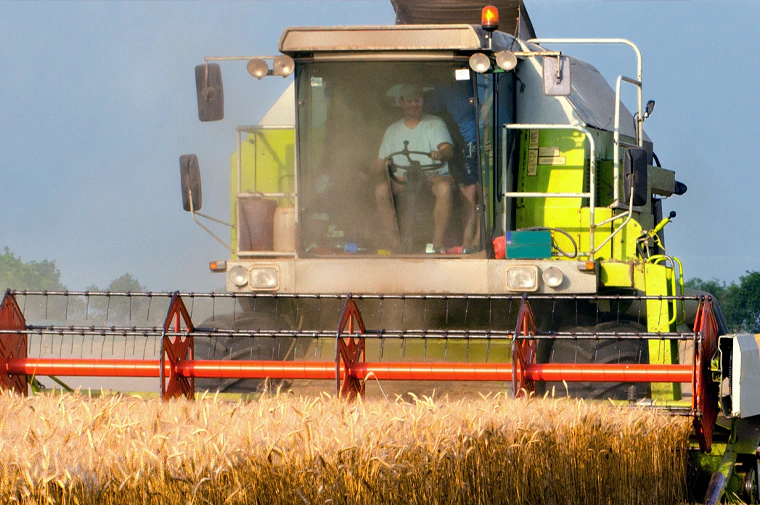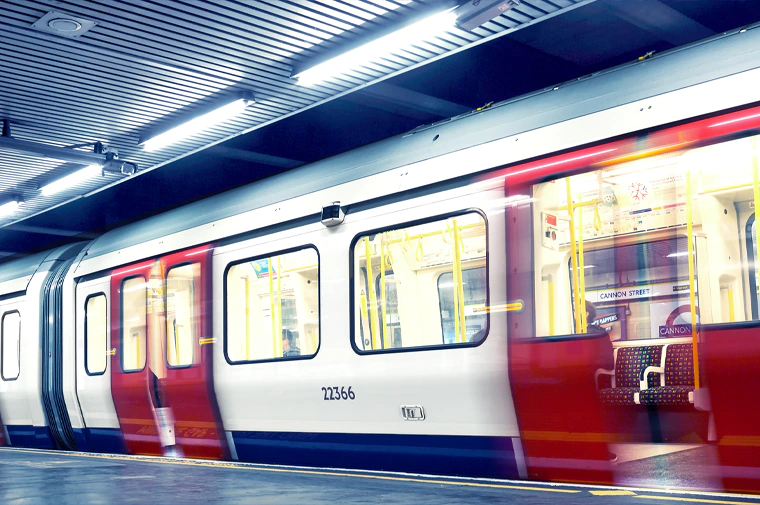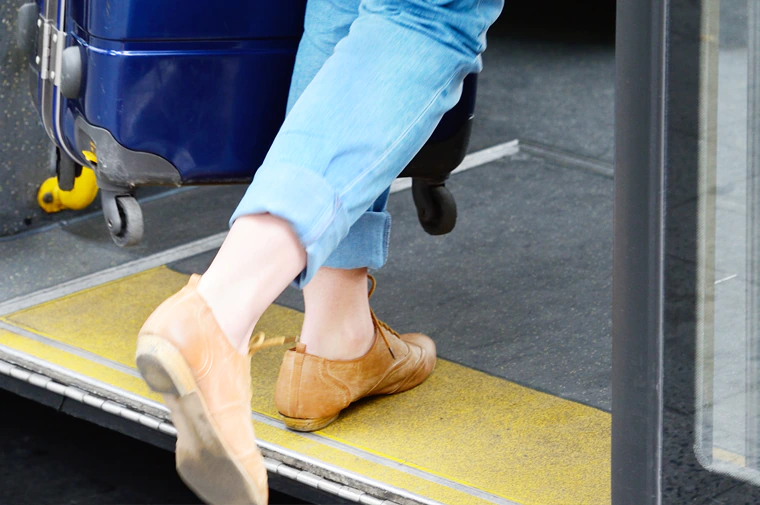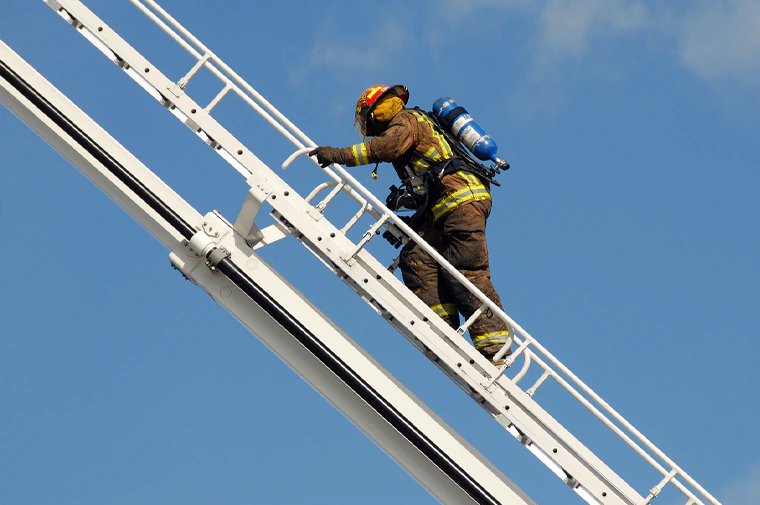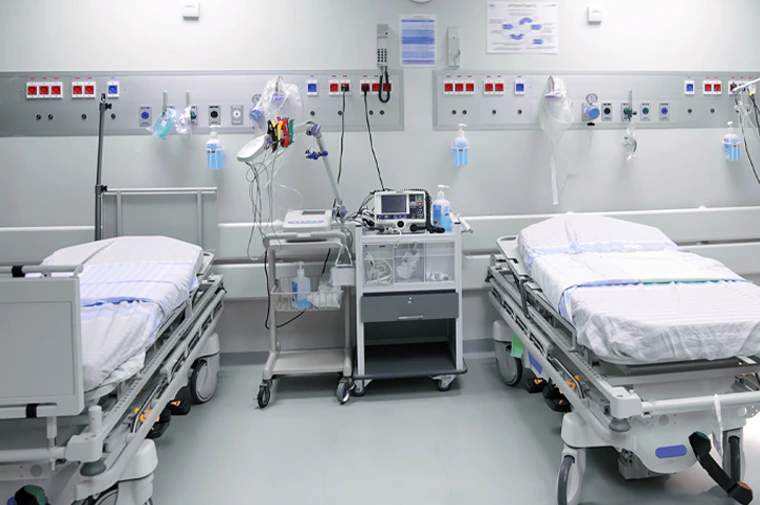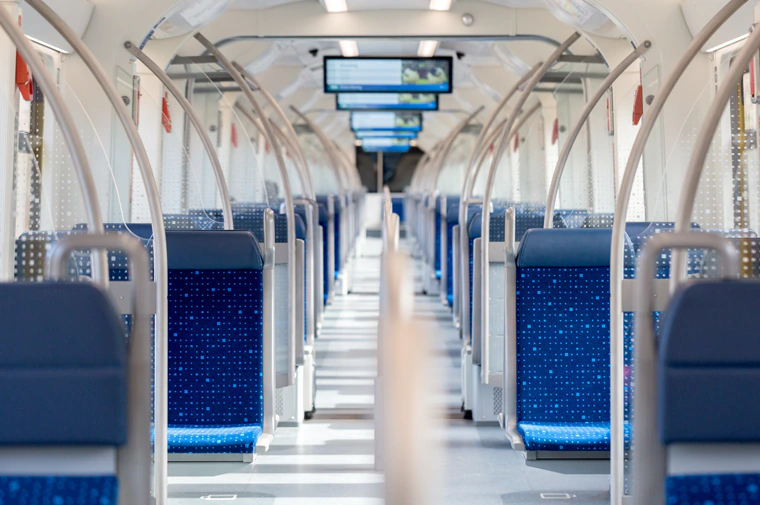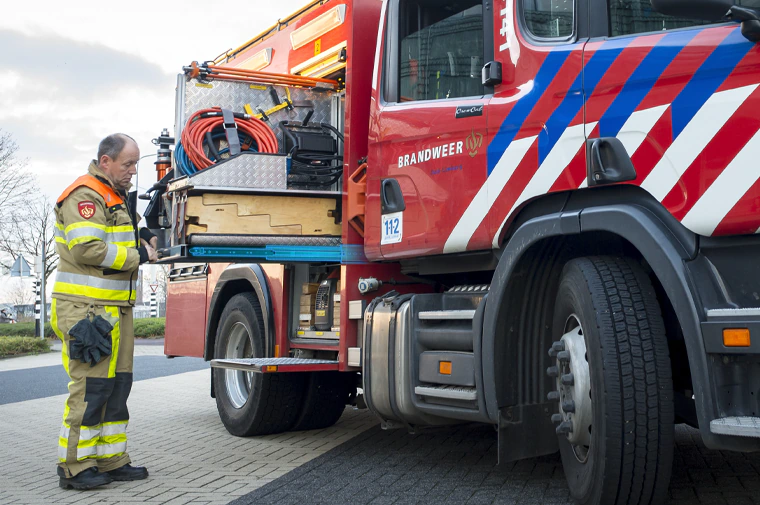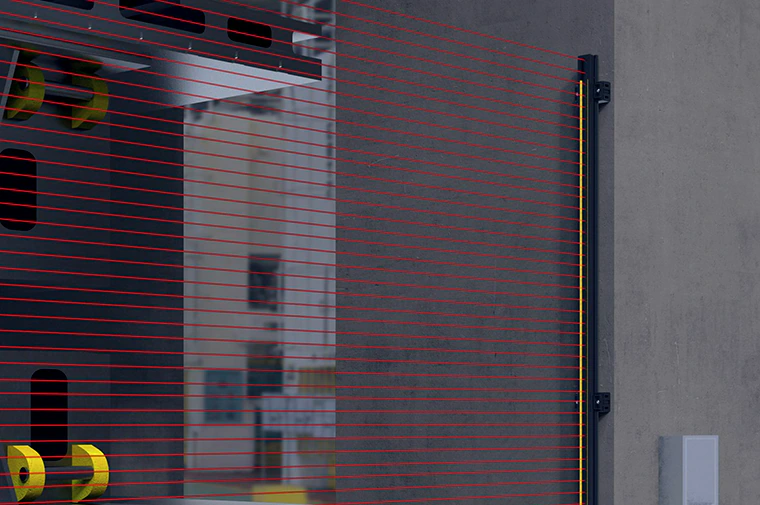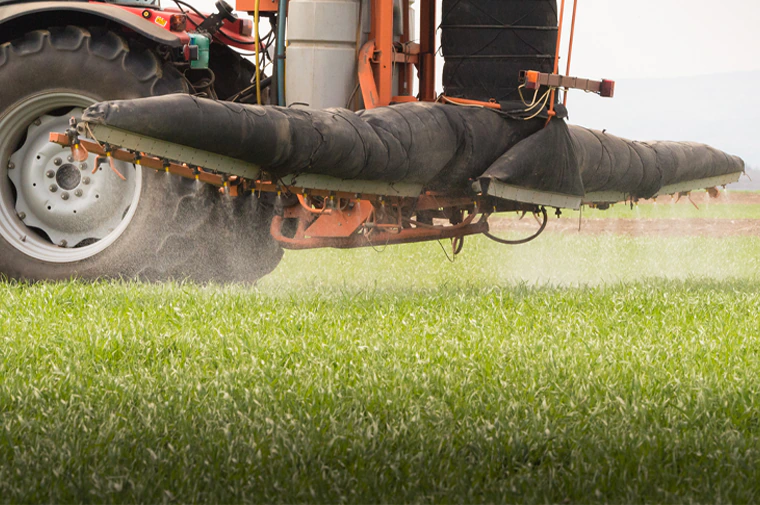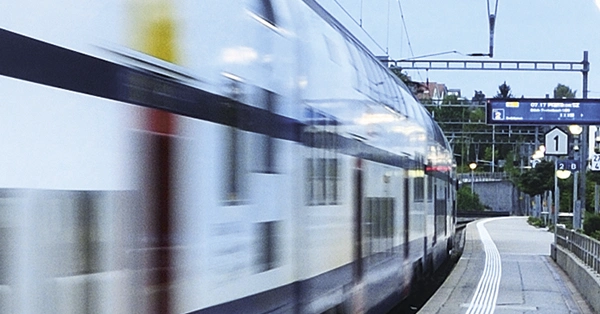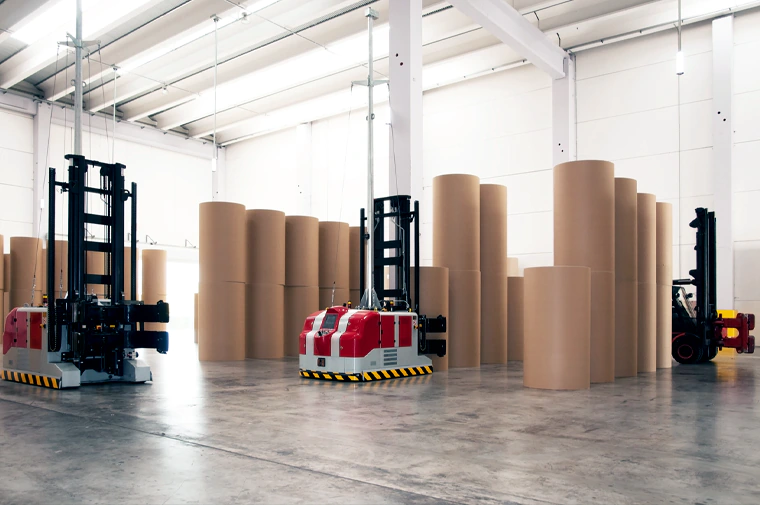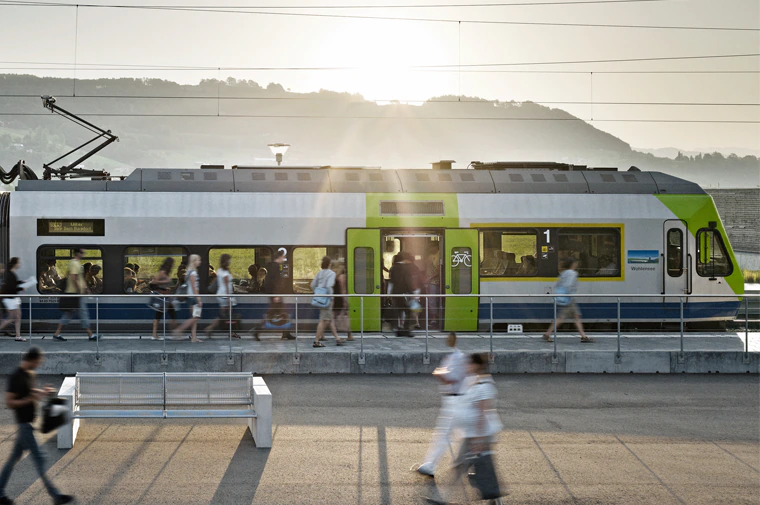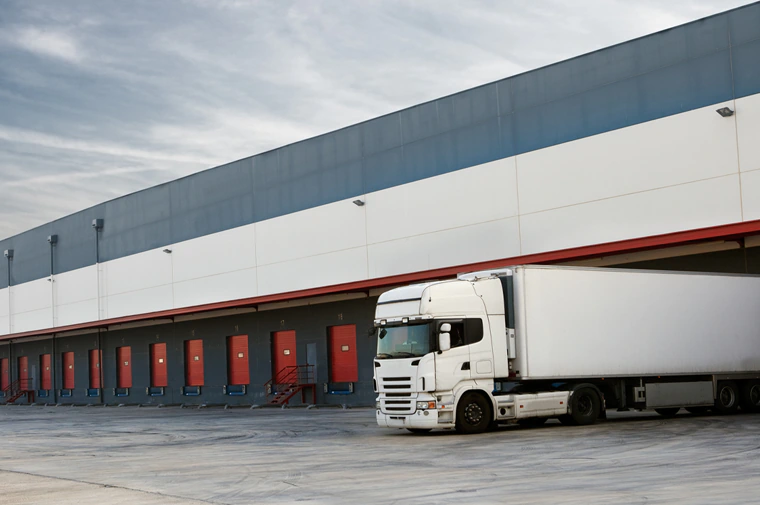
Home > Safety technology > A shining example of personal comfort: DUOmetric light curtain systems
A shining example of personal comfort: DUOmetric light curtain systems
For public transport companies, passenger comfort has top priority. A critical factor for this is the boarding and exit area with automatic doors. Despite safety contact strips, passenger comfort is restricted, and unpleasant interactions with the moving door panels may occur. Adding DUOmetric’s comfort light curtain systems guarantees enhanced comfort for passengers boarding or exiting the vehicle.
Automatically operated train and bus doors pose a challenge: depending on passenger behaviour, the doors sometimes close too soon, trapping the person boarding or exiting. Even if the door immediately opens again, this can result in unpleasant situations, particularly for children or older passengers. Even slight jamming should therefore be prevented.
Better safe than sorry
To prevent impact, crushing and shearing motion, tactile safety contact strips are used on the closing edges. These generally fulfil their purpose, because they offer good and efficient accident prevention. However, the contact strips only respond to pressure.
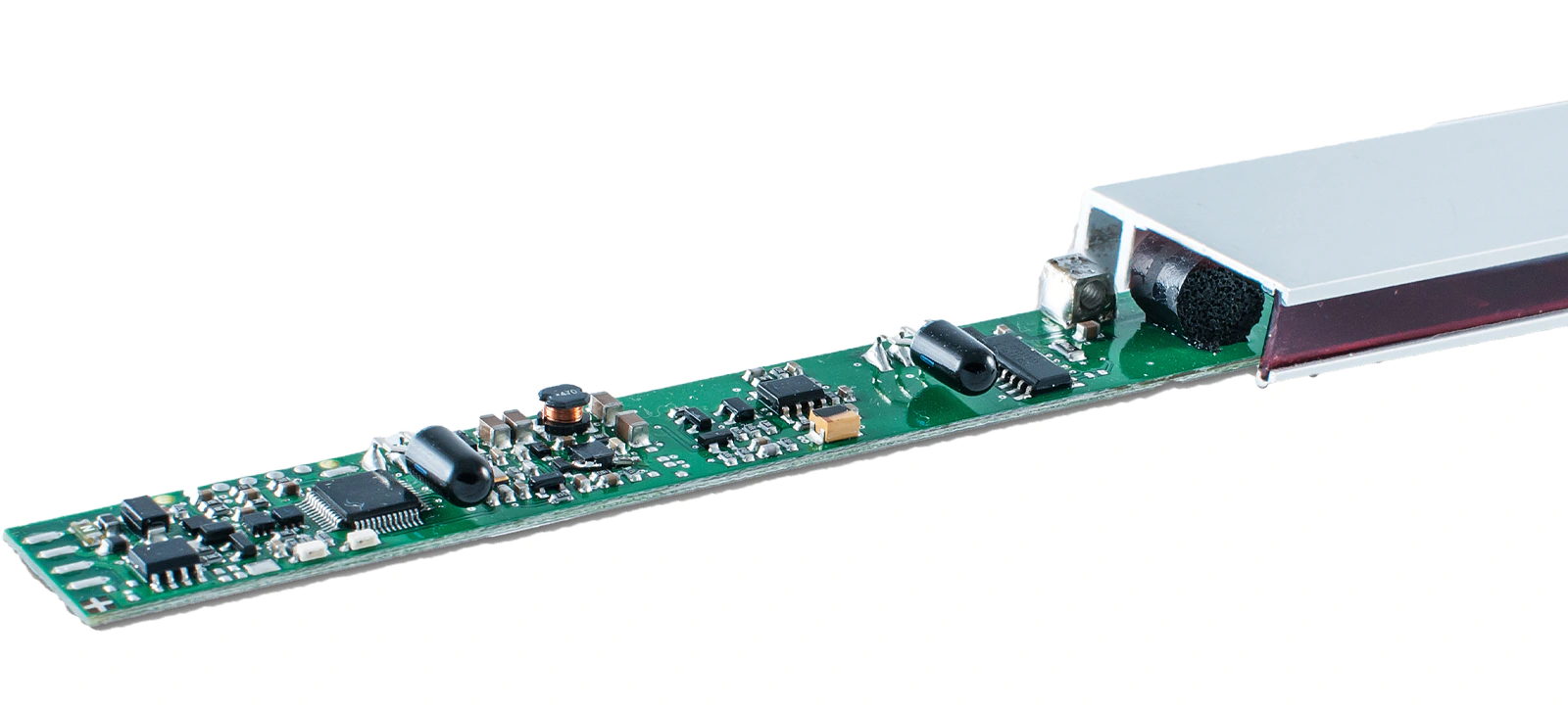
Contactless detection by means of light curtain systems
Optical light curtain systems from DUOmetric are an ideal supplement to existing door monitoring components. They detect people and objects without contact and block or interrupt the door closing process immediately. The interplay between the comfort light curtains and the monitoring components significantly enhances the comfort of passengers boarding and exiting the vehicle, and ideally helps to further minimise the risk of accident by avoiding contact with the door panels.
Solutions customised to the vehicle type
Light curtain systems can be integrated into any vehicle type and can be adapted individually to the spatial conditions in the boarding and exit area. Ideally, the additional installation of this comfort light curtain system should be incorporated from the outset when developing new vehicles. For retrofitting in existing vehicles, the engineers from Bachofen, in collaboration with the specialists from DUOmetric, develop customised special solutions that meet the specific requirements of the respective vehicle types. Safe and secure.
Downloads
Discover more products from DUOmetric
Areas of application
-
Jostling protection
-
Object detection
-
Entering of results
-
Forearm detection
Rays of hope for greater safety
-
Monitoring heights of up to 3 metres
-
Light barriers can be split into segments
-
Sturdy aluminium standard housing
-
Special housing available according to requirements
-
Configurable function software (beam blanking)
-
Beam grid from 5 to 112 millimetres
-
Function-monitored, maintenance-free system
-
High ambient light protection
Other focus topics in the area of transport, traffic, vehicles
Wireless vehicle identification: miniature guardians
Installing sensors for vehicle identification doesn’t have to mean digging trenches and laying cabling. Banner’s wireless alarms are smaller than a hockey puck, can be sunk into the floor...
Guard duty on the ramp: BANNER vehicle detection
Open gates are somewhat inviting. Unfortunately that is also the case for unauthorised people. Previously it was commonplace to employ gatekeepers who kept an eye on the comings and...
Up to the harsh conditions of the road: stainless steel couplings from Parker
The pneumatic and hydraulic systems in public transport vehicles are exposed to particularly harsh conditions, as are the lines and couplings that play a central role in these systems....
Specially designed for work machines: the new Turck pressure transmitter PT1100/2100
The insides of work machines are exposed to harsh operating, ambient and weather conditions. Components such as pressure sensors are subject to requirements that far exceed those of applications...
Procurement made easy: Bachofen safety technology from a single source
There are many aspects to the safety of machines, plant and vehicles. However, designers and operators have more important things to do than be setting up an evaluation process...
Personal protection: prevention thanks to building technology
The statutory provisions in the field of building technology and the construction industry specify strict guidelines when it comes to personal protection. There is a good reason for this:...
Personal safety in buildings: prevention with Mayser’s safety technology
With increasing requirements in terms of energy footprint, safety and design, automation in building technology is progressing further and further. However, automatic doors, gates and windows can still pose...
Parker Viking Xtreme: the valve range with crossover qualifications
Parker Viking Xtreme: The valve range with crossover qualifications Stringent requirement criteria apply to pneumatic valves used in vehicle construction. Approval is only granted to products that reliably perform under...
No more last-minute door panic: the new non-touch system from Mayser
The doorways of buses, trams and trains can be hazardous for public transport passengers. Incidents involving automatic doors can cause serious injuries and damage the reputation of transport companies....
Mayser safety technology: combatting last minute panic in passenger traffic
Public transport is facing constant increases in acceleration, congestion and hustle and bustle. Especially at rush hour. And the risk of accidents is therefore also increasing for passengers. With...
Don’t get bent out of shape: supreme heavy-duty telescopic slides
Every composite system is only as good as its weakest part. This old truth applies in particular to the operation of commercial and railway vehicles. For there is barely...
No uncertainty on the rails: Rectus quick-release couplings
When operating railways, each individual component must be reliable to ensure that the trains move around on schedule and without stoppages – even in adverse weather conditions. With the...
Hot tip for pneumatic systems: non-flammable PA tubing from Parker
Standard products are not suitable for many functions in the maintenance of public transport rail and road vehicles. One important consideration, for example, is the prevention of overheating. This...
High load capacity, better value: the 7619 Jumbo telescopic slide from Thomas Regout
When purchasing mechanical components, it is important to seek out the best possible function, within the limits of what you need, while spending as little as possible. You need...
Bringing up the curtain on improved safety: New high-capacity safety light grids from Banner
Although ensuring machine safety often has no direct benefit on productivity, it is nonetheless too important to be ignored. Accidents involving personnel can have dramatic consequences for those affected...
Encoders for mobile machinery: the Turck mini holds tight
Automation in vehicle construction is like a rally course littered with obstacles – mobile applications place much higher demands on automation components than traditional industrial applications. With the compact,...
Automation? Yes, of course!
The increasing automation of industrial processes demands reliable safeguarding of the hazardous areas surrounding machines, robots, transfer lines and automated guided vehicle systems. The safety requirements specified in the...
Accident prevention: it pays to play safe
Whether driverless or not, vehicles pose a hidden accident risk as soon as they are in motion. Increasing levels of automation also elevate this risk. Modern safety technology provided...
A shining example of personal comfort: DUOmetric light curtain systems
For public transport companies, passenger comfort has top priority. A critical factor for this is the boarding and exit area with automatic doors. Despite safety contact strips, passenger comfort...

